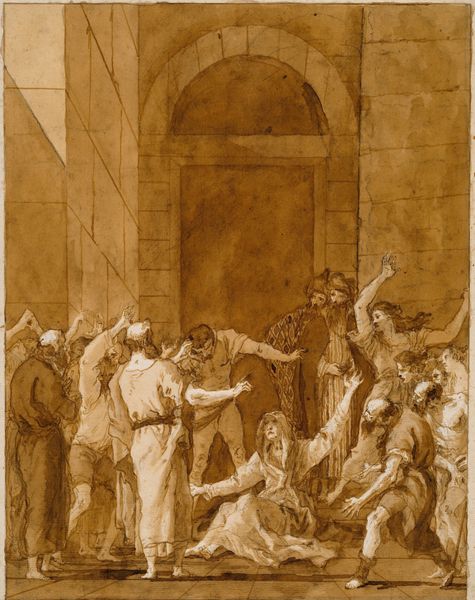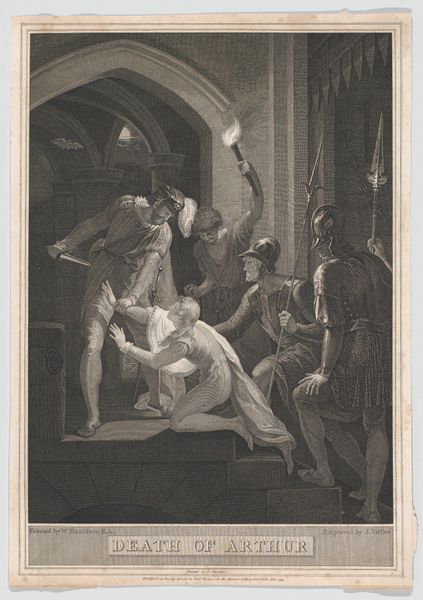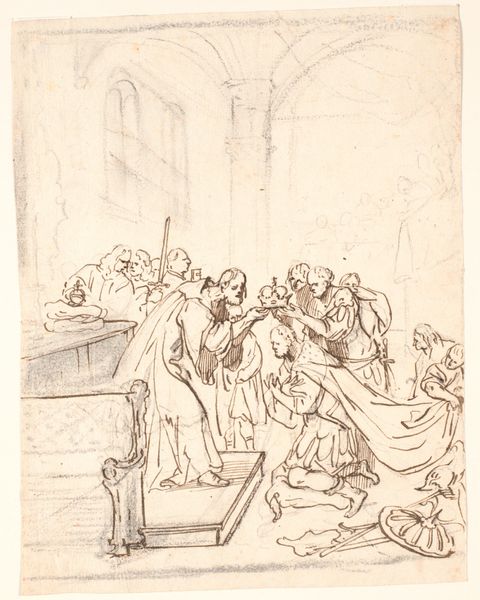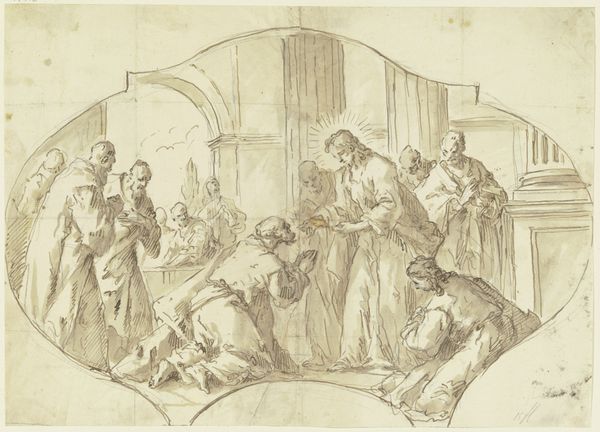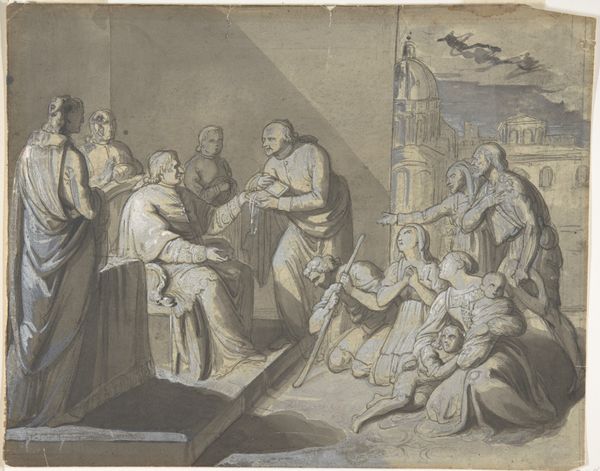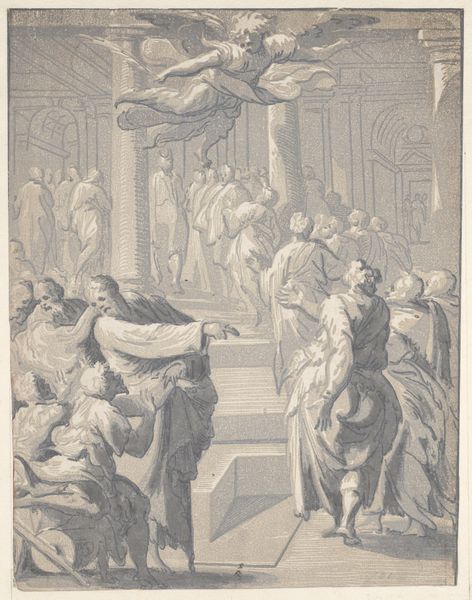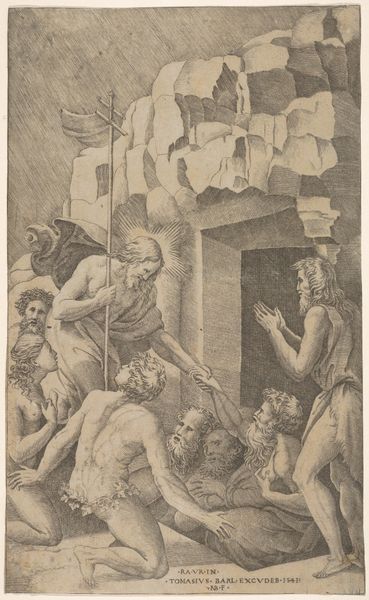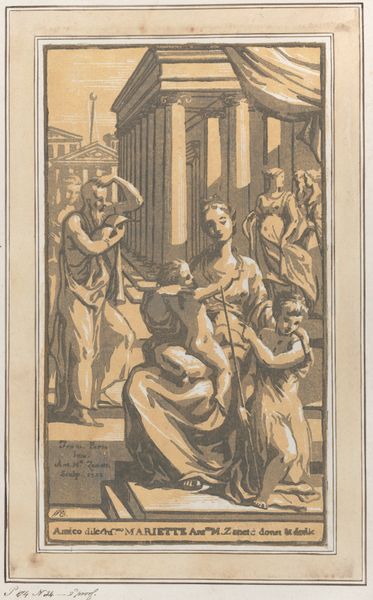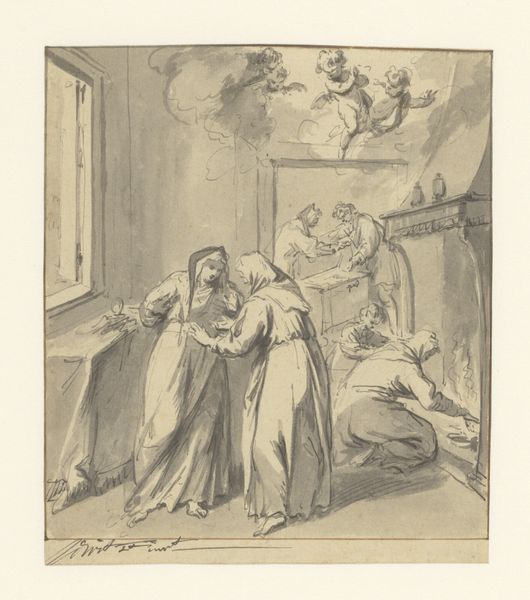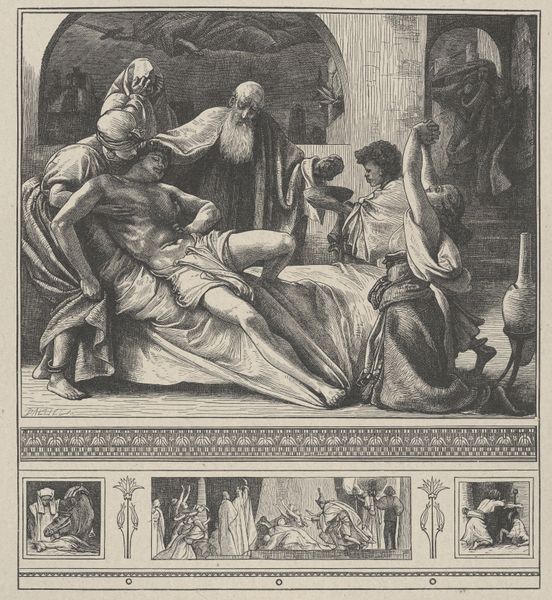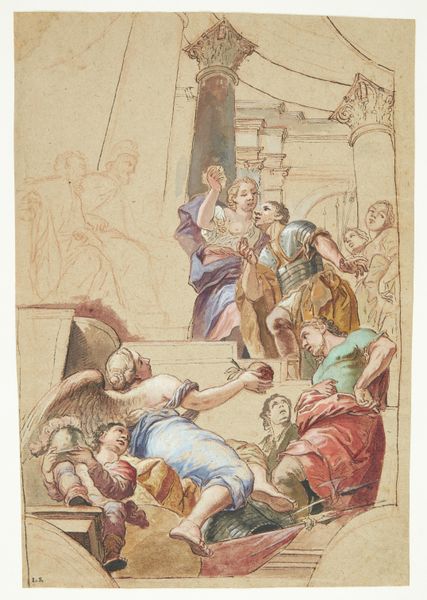
drawing, print, paper, ink, chalk, graphite, pen
#
drawing
#
allegory
#
narrative-art
# print
#
figuration
#
paper
#
ink
#
romanticism
#
chalk
#
graphite
#
pen
#
history-painting
Dimensions: 388 × 340 mm
Copyright: Public Domain
Editor: This is Charles Robert Leslie's "Scene from 'A Winter's Tale'," and while it is undated, it depicts a theatrical scene in pen, ink, chalk and graphite on paper. There's a drama unfolding; it feels heavy with accusation. I'm curious, what stands out to you in this piece? Curator: The use of relatively inexpensive materials for such a grand narrative is interesting, isn't it? The paper itself, the methods of application—pen, ink, chalk, graphite—suggest a readily available means of production, yet Leslie stages this very opulent, supposedly ‘high-art’ moment. What does it mean to depict a Shakespearean drama, steeped in royalty and intrigue, using materials accessible to the everyday artisan? Editor: So, the contrast between the subject and materials speaks volumes? Curator: Precisely! Look at the paper's surface; it isn't pristine. There's evidence of process, perhaps even revisions. It invites us to consider the labor involved in image making, doesn’t it? This isn't some flawless oil painting suggesting effortless genius. The materials show the hand of the artist and their process. It becomes about how meaning is constructed not just through representation, but through the very means of that representation. What do you make of the composition itself in terms of materials used? Editor: Now that I consider it, the ink and wash seem hastily applied. It almost cheapens the intended grandeur. I guess I hadn't considered that before, but it definitely gives off that impression! Curator: Yes, and that “cheapness,” as you put it, allows us to question traditional art historical value judgments. Does the work’s accessibility challenge established notions of taste and artistic merit? Instead of seeing the price, we should reflect more on process and materials. Editor: I'm seeing it from a totally different angle now. The material context really shifts my understanding of the piece itself. Thank you.
Comments
No comments
Be the first to comment and join the conversation on the ultimate creative platform.
